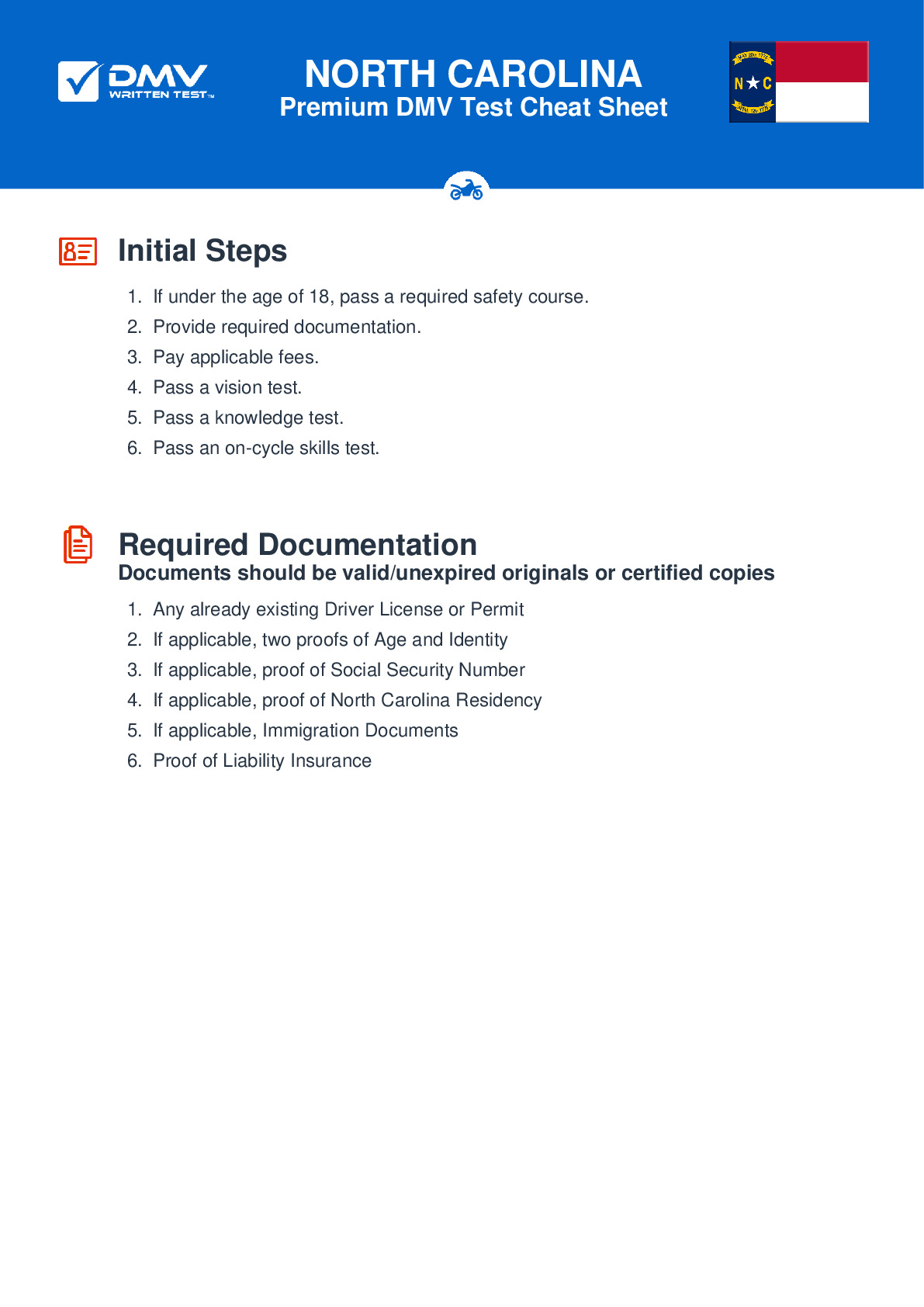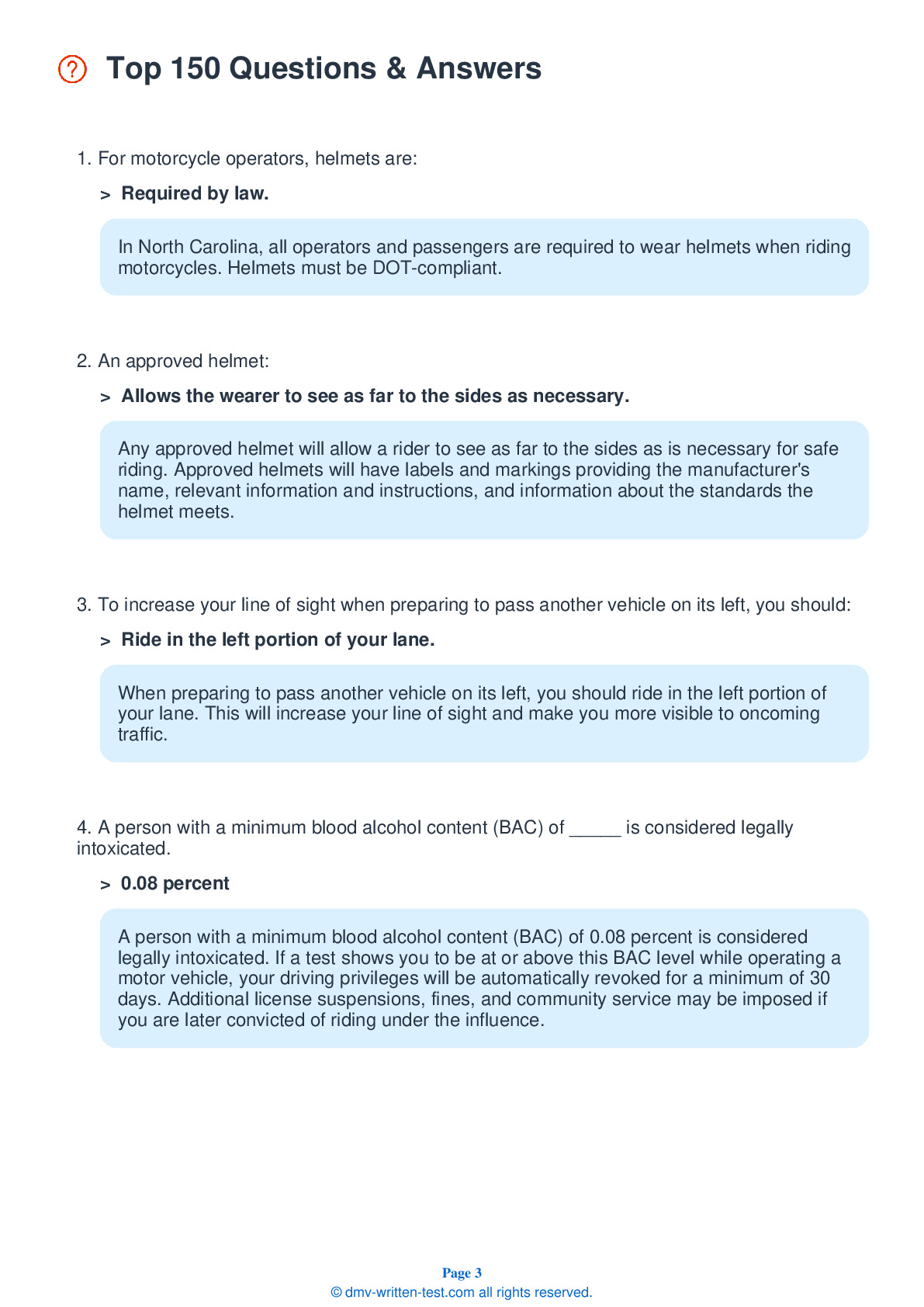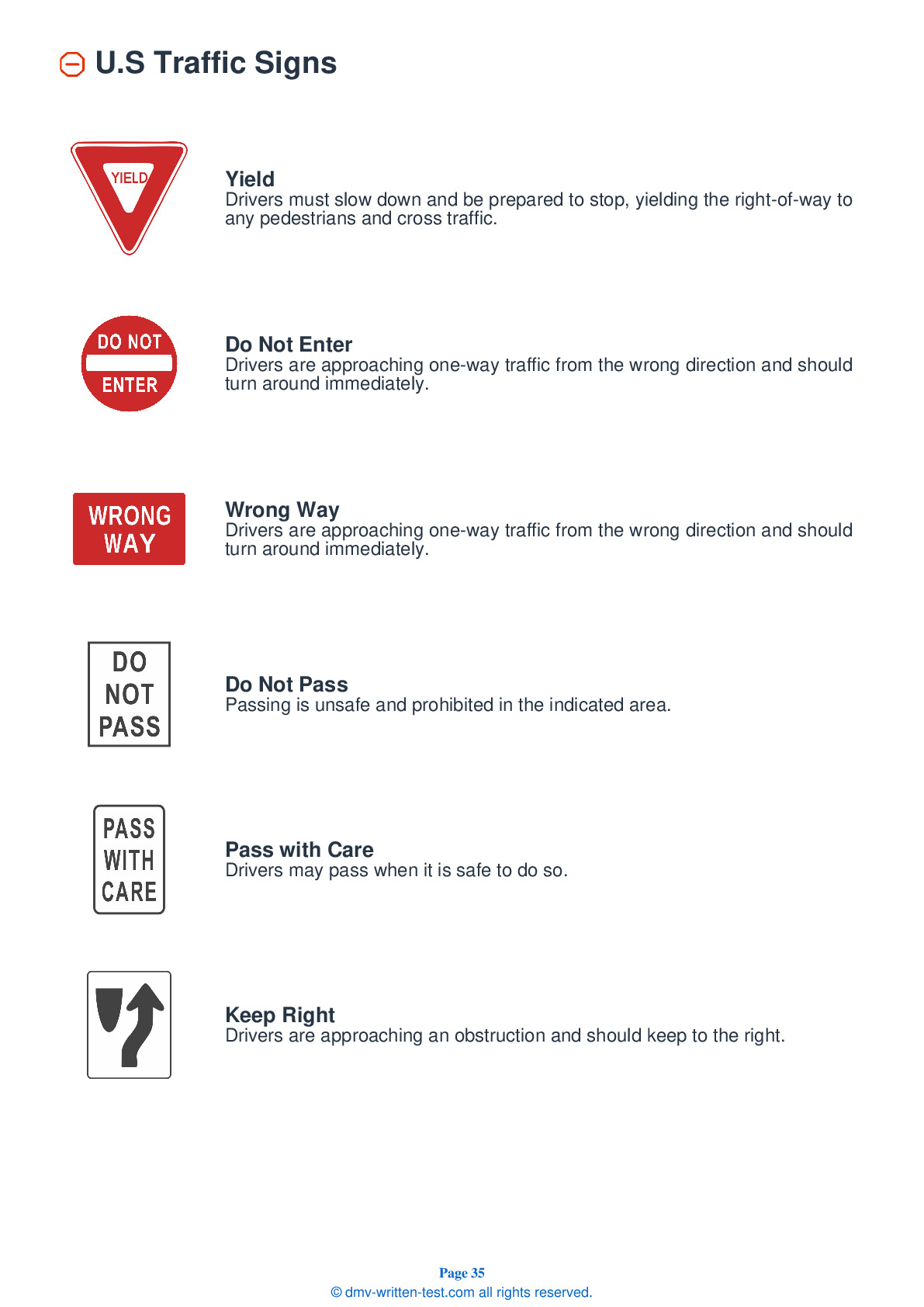2026 North Carolina Motorcycle Permit Test 16
The following questions are from real DMV written motorcycle permit tests. These are some of the actual permit questions you will face in North Carolina when getting your motorcycle learners permit. Each motorcycle theory practice test question has three answer choices. Select one answer for each question and select "grade this section." You can find this button at the bottom of the drivers license quiz. For a complete list of questions and answers for North Carolina please visit https://cheat-sheets.dmv-written-test.com/en/north-carolina/motorcycle.
Number of Tests
Number of Question
Passing Score
21. To reduce your reaction time, you should:
Explanation
When approaching a potentially dangerous area, such as an intersection, you should cover the clutch lever and both brakes in order to reduce the amount of time you will need to react to any hazards.
22. When riding, you should:
Explanation
When turning, look through the turn to where you want to go by turning only your head. Keep your knees against the gas tank to help maintain your balance while turning. Your arms should be slightly bent any time you are holding the handgrips.
23. What is the best lane position for a motorcycle?
Explanation
No single lane position is always best and no single lane position should always be avoided. Adjust your lane position as road and traffic conditions change, choosing a position that will maximize your space cushion and allow other drivers to see you more easily.
24. Each traffic lane gives the motorcyclist how many paths of travel?
Explanation
Each traffic lane provides three paths of travel for motorcyclists: the left, center, and right portions of the lane.
25. Which of the following is a poor reason to sound your horn?
Explanation




